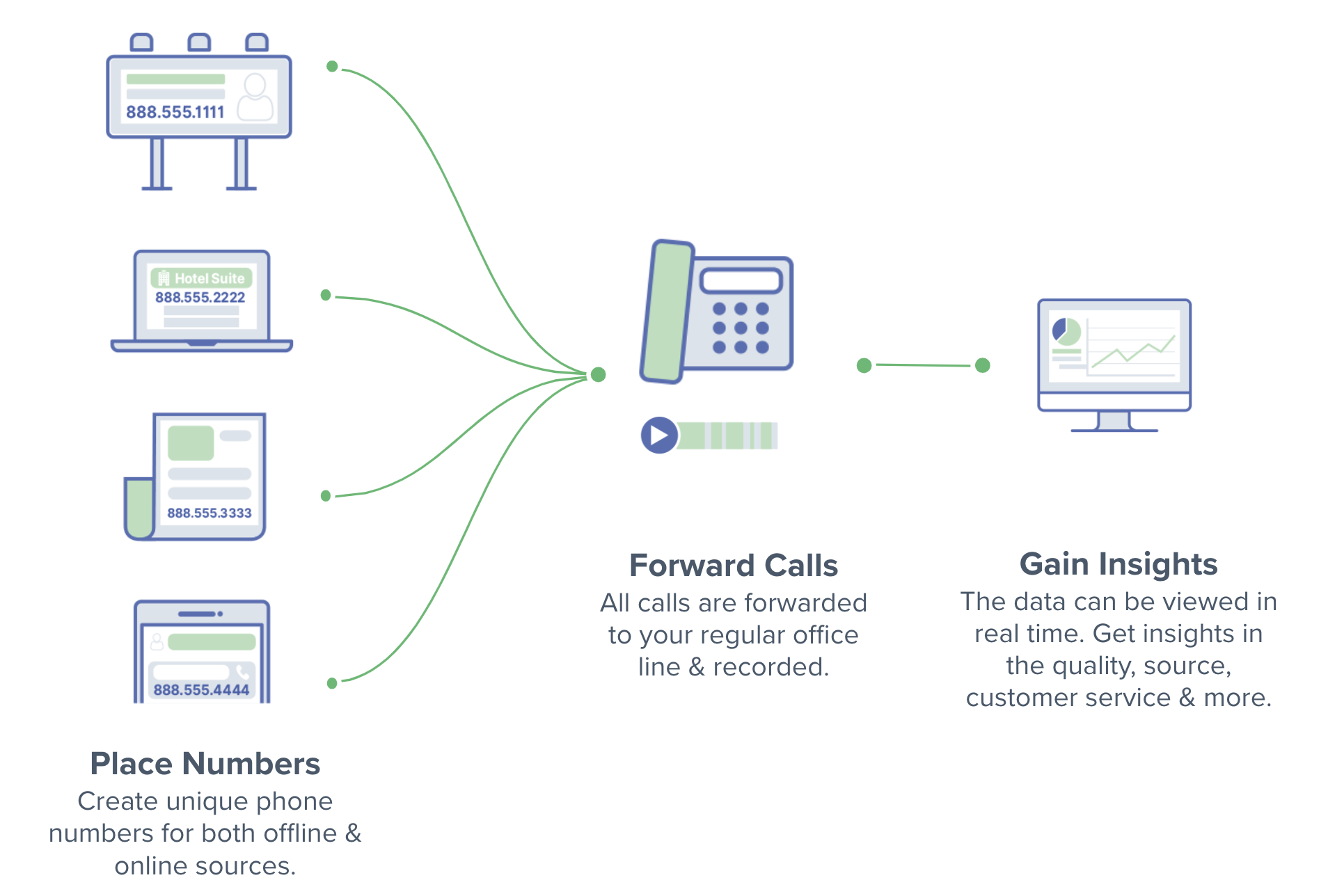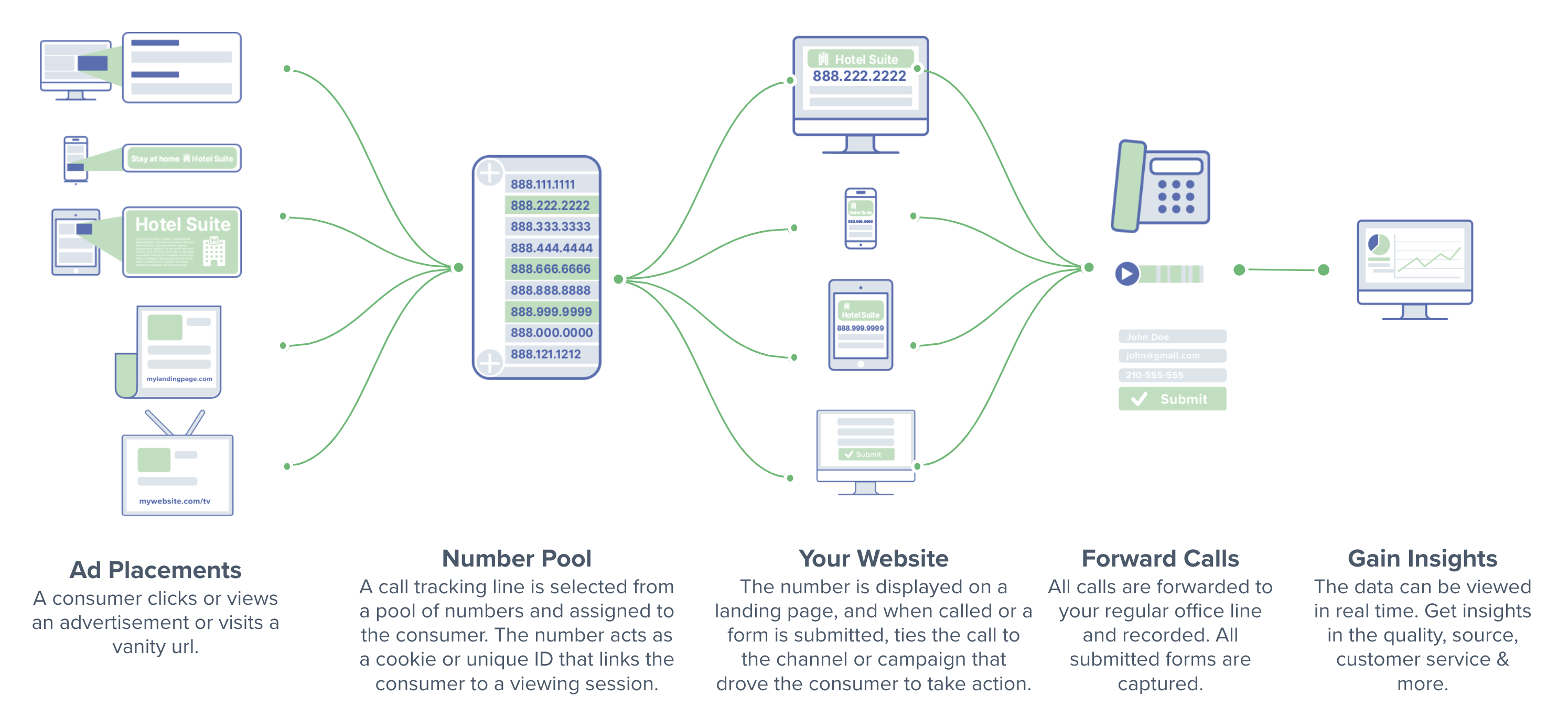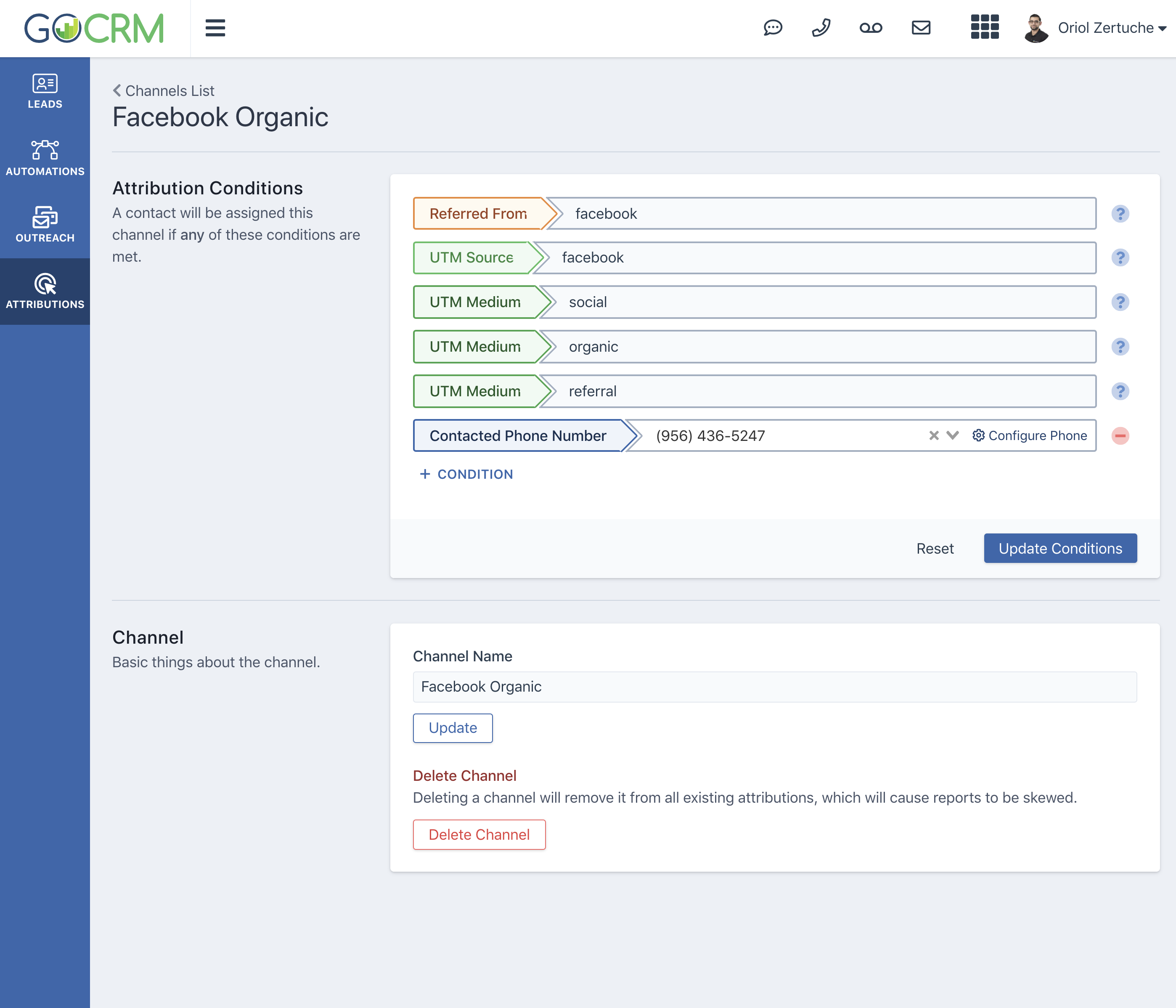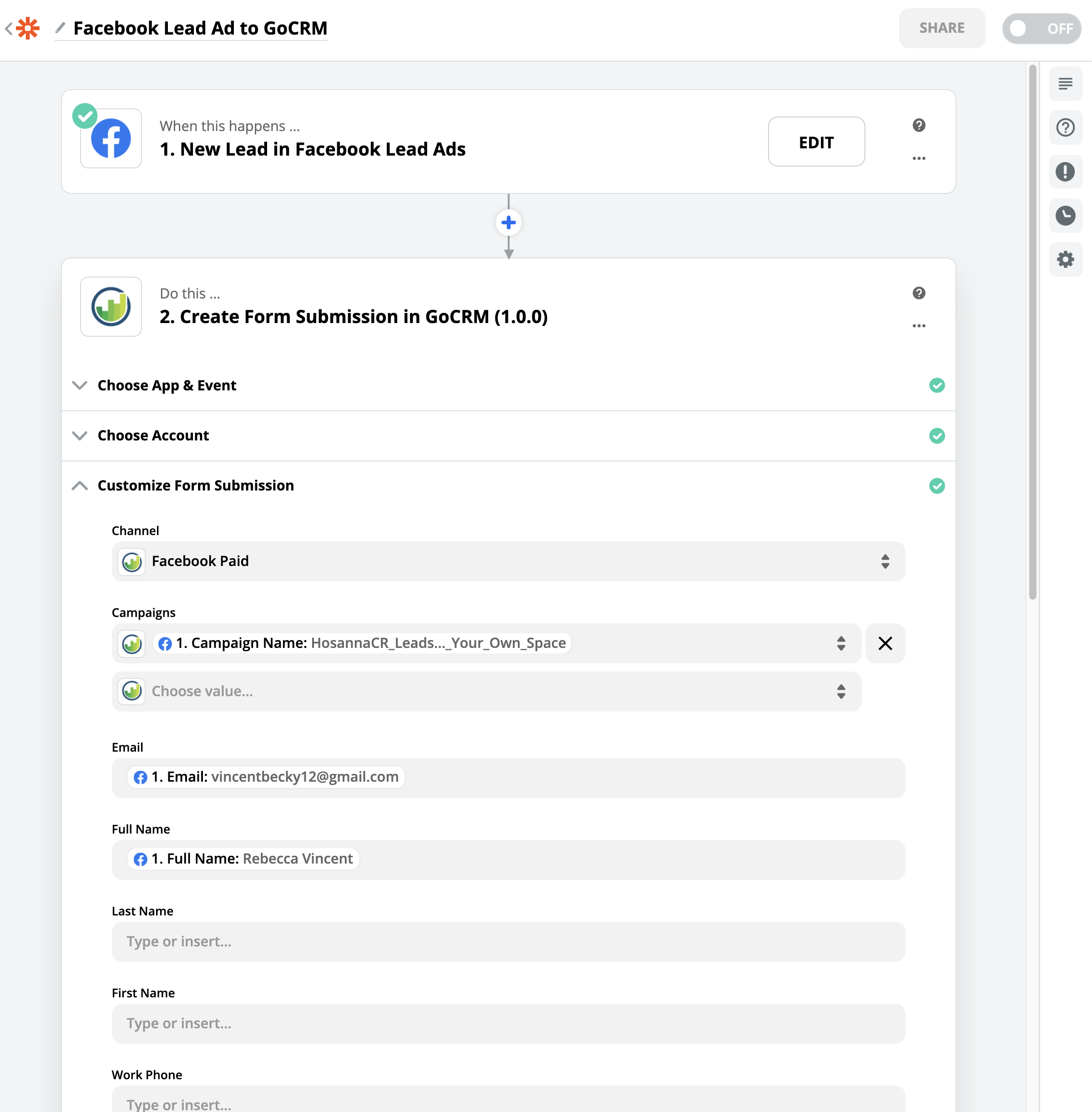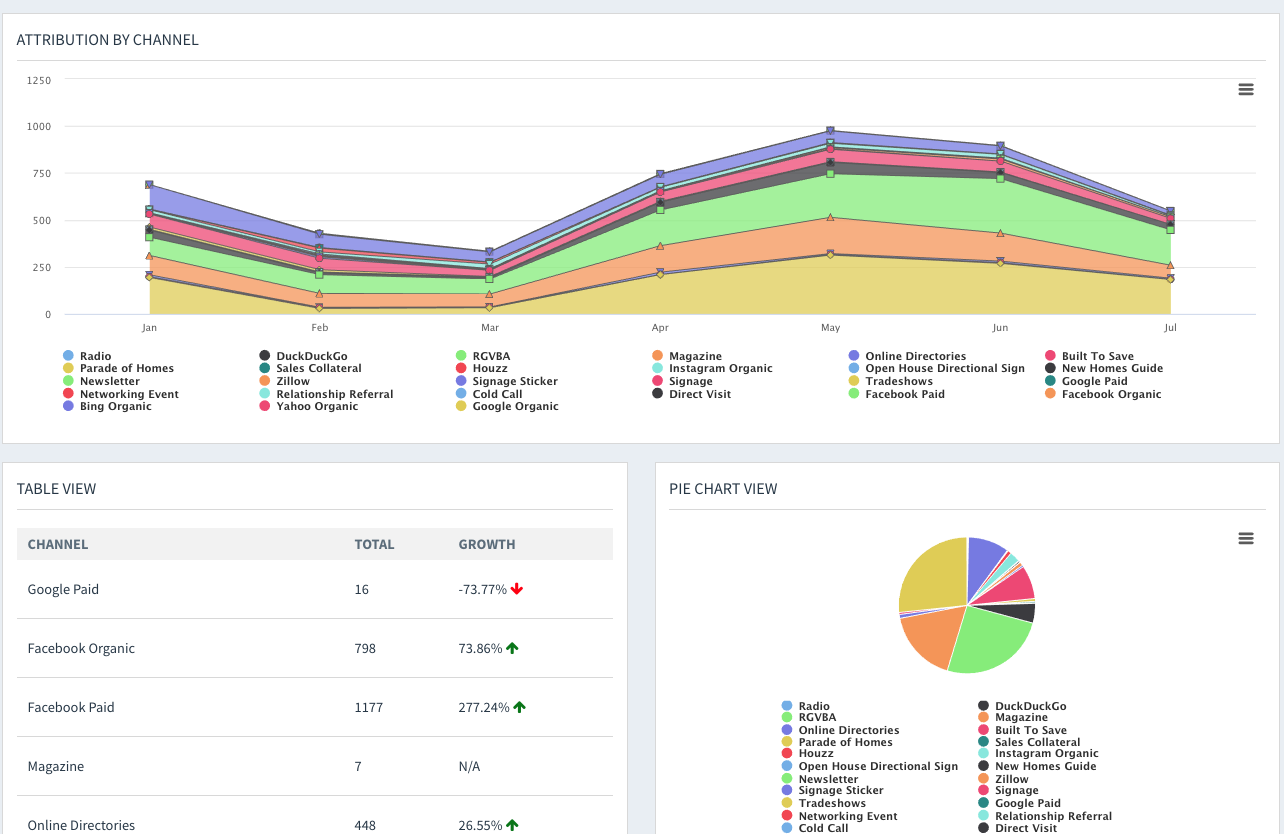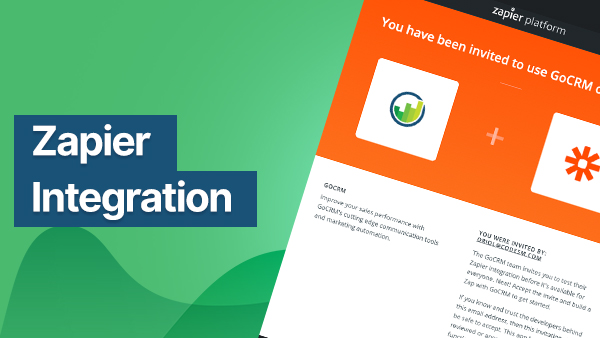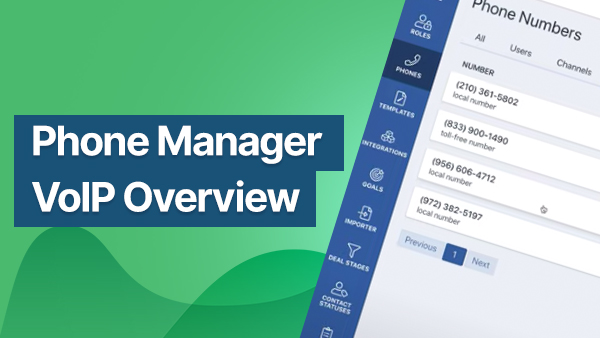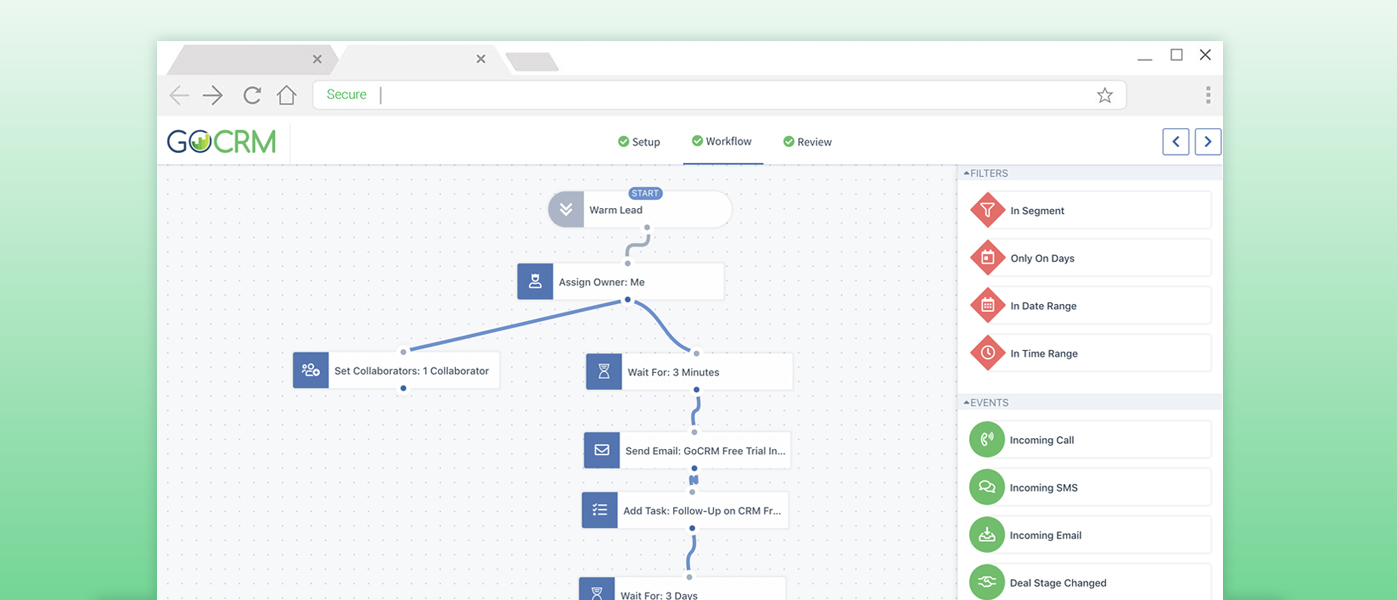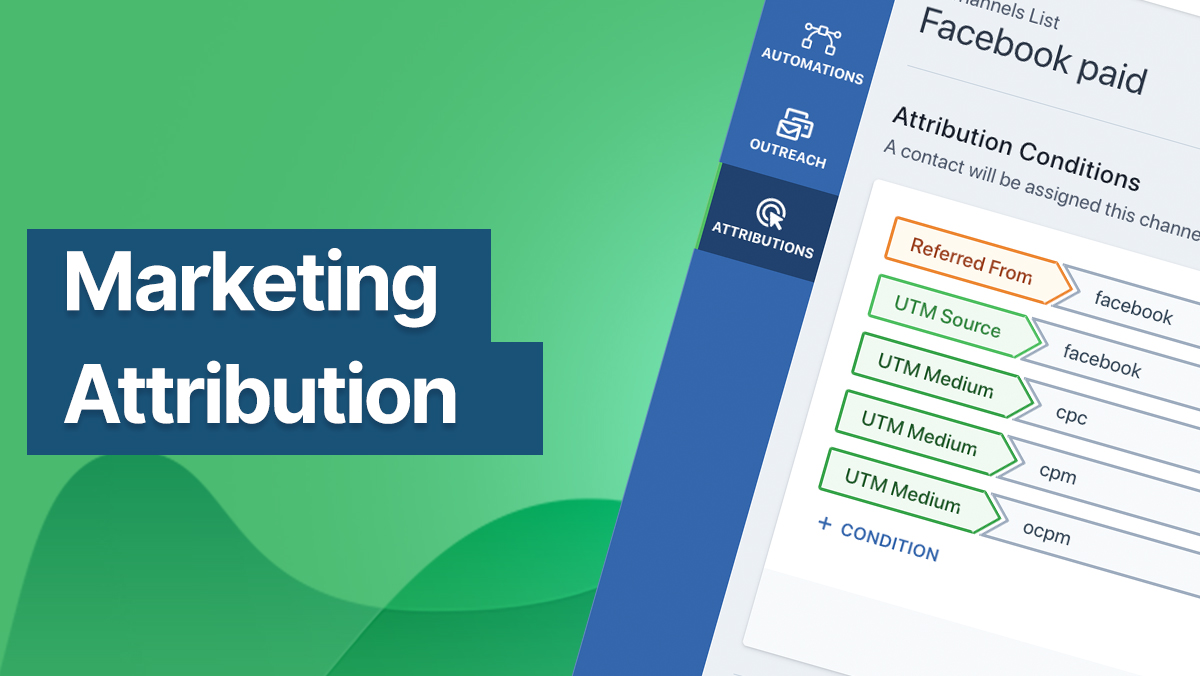
How To Track Your Marketing
If you can measure it, you can manage it. Tracking your marketing is about more than just numbers. If you do it right, you can use the data to determine what is or isn’t working and to measure the efficacy of different channels and campaigns. Ultimately, this puts you in a position where you’re able to decrease marketing spend on underperforming channels to maximize results from high-performing channels, thus creating a cost-effective marketing strategy that gives you the results you want.
GoCRM offers advanced marketing attribution features that collect valuable in-depth data and help you find out exactly how you should adjust your marketing strategies to increase their results. With so many different marketing campaigns and channels, GoCRM helps you track the detailed performance of each. Let’s understand how to track your marketing with GoCRM.
Marketing Channel & Campaign Tracking
Regardless of your industry, any effective marketing strategy relies on an omnichannel approach. This means you use various channels – like radio, magazines, email sequences, social media ads, SEO blogs, etc – to attract leads. And often, a channel can have multiple marketing campaigns running at once. A singular marketing campaign can also span across various channels. This can get tricky to track if you don’t have the right system, but GoCRM tracks your marketing results across every channel and every campaign.
It assigns specific phone numbers or URLs to your marketing channels and campaigns. This tracks where leads come from and show exactly how many leads a specific source is bringing in. This helps you to get a better idea of how your different marketing channels and campaigns perform. The GoCRM system automatically organizes all your leads into one centralized location where you can see every lead’s exact journey. You can easily view any contact to instantly see their origin, channel, and campaign.
The Methods:
GoCRM offers attribution features that act as the perfect tracking toolbox. Because the system is integrated with all your marketing efforts across the board, it collects valuable data and helps you track your marketing in three main ways:
Call Tracking
Call tracking gives you in-depth information on every person who calls your business and correlates incoming calls with different ads or marketing campaigns. This helps you understand which campaigns are working and how you can adjust your marketing strategies for improved capturing and conversion.
GoCRM helps you detect leads by assigning different phone numbers to different marketing elements. Whenever a lead uses a specific contact phone number to contact you, you will know which marketing material they engaged with. This way, you can connect leads to the right channel, measure different channels, and analyze whether results match spend.
Dynamic Number Insertion & Form Tracking
Instead of just knowing a lead came from your website, GoCRM integrates with your website to track all forms and phone calls and the lead’s entire session data. Dynamic Number Insertion (DNI) integration changes any phone number from within the website to update in real-time in every place where it’s listed to measure the impact of marketing efforts on inbound contact.
Through DNI, GoCRM integrates with your website and tracks all website form submissions and calls to collect the following information: Page URL, Referrer URL, Landing Page URL, UTM source (tracks which platform the traffic comes from, like Facebook, LinkedIn or Twitter), UTM medium (shows what kind of traffic it is, such as paid, referral, organic, etc), and UTM campaign (pinpoints the specific campaign that resulted in the traffic.) This way, you can see the lead’s behavior and their steps taken while engaging with you. GoCRM’s web tracking can also be used for designated URLs to gauge how certain campaigns, products, or special offers compare to each other.
Direct Lead Integration
Even direct leads can be tracked with GoCRM’s advanced direct lead integration. It uses third-party Zapier integrations to collect leads which can then be automatically assigned to a source from within GoCRM.
Examples:
Wondering exactly how these tracking methods work? Here are some examples of what you can do with your GoCRM tracking tools:
Offline Channels
With the GoCRM Channels toolset, you can create unique phone numbers and track custom URLs for your marketing pieces. So say you had a promotion being advertised through direct mail, this postcard will have a designated phone number and/or URL so that if somebody calls you from the postcard, the system will know where the call originated. If somebody visits the landing page, then makes a phone call or submits a form, through DNI, we’ll be able to trace it back to the source direct mail.
Online Channels
Leads come from various places online, like Search Engines or Social Media. GoCRM combines call and URL tracking to accurately determine where leads found you. It determines what post, ad, campaign or other element lead them to you. This example shows how GoCRM tracks incoming leads from Facebook through a variety of methods. It also demonstrates how a lead is tracked if they directly called the unique number listed on a Facebook page.
Third-Party Direct Sources
Whenever a form is filled out by a lead, whether it’s online or offline, it will be tracked. GoCRM also lets you integrate direct sources from a third party with Zapier integration. The system uses all the information available on a lead to autofill forms with their right details and ensures all third-party forms are captured as well.
Don’t Forget About Reports
While having access to data about your marketing performance is great, it’s only one part of tracking. The other part is being able to view all of this information in a way that helps you understand what is happening and learn where you should make changes. This is why GoCRM also gives you the option of creating detailed reports of your data.
The system compiles all tracked data into an in-depth report that breaks down your marketing performance. These results can be viewed by channel, show the month-to-month growth of each, as well as how many deals were closed from every channel. These reports measure your marketing spend compared to the results to tell you what the ROI of different marketing tactics are. Essentially, detailed reports help you minimize marketing spend while maximizing results.
Curious about GoCRM? Try it free for 30 days to see these tracking features and much more in action.


